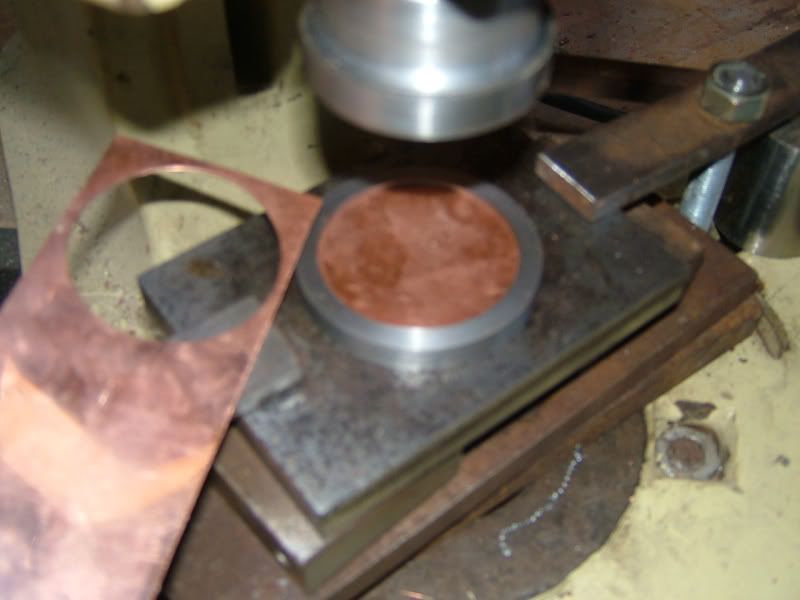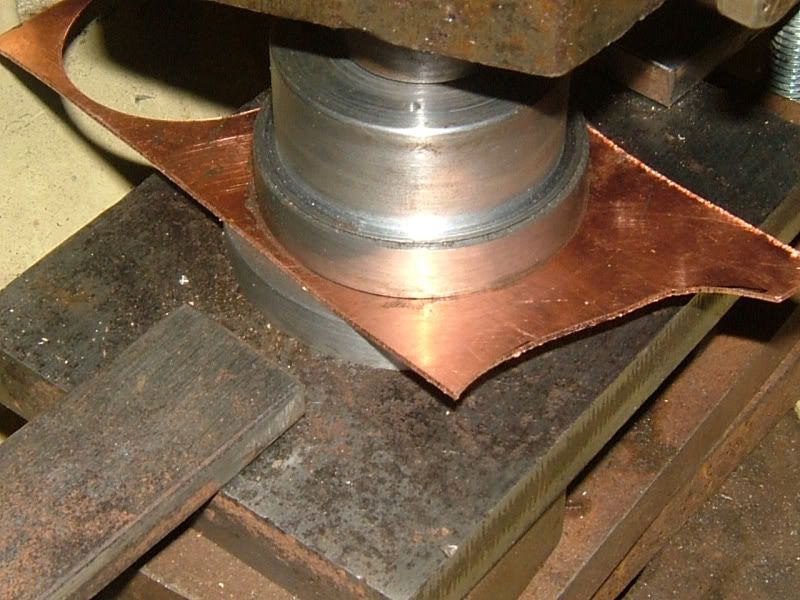- Joined
- Jul 8, 2009
- Messages
- 686
- Reaction score
- 201
I scored a punch and die set off Ebay for a very reasonable amount.
http://www.ebay.com/itm/20095238206...NX:IT&_trksid=p3984.m1497.l2649#ht_209wt_1185
It was used, but handmade with great care. It's set up for punches ranging from 1/16" thru 1" by 1/32's and in some cases by 1/64's. It was a little rusty and very grungy when I got it, but a lot of elbow grease took care of that. I still have to get a new dowel to replace the missing guide pin but the set is in pretty good shape now.
As you can see it's missing a few punches. I don't have the equipment to make new punches fron scratch so my plan is to cut the end off the appropriate drill bit, harden the business end, and then sharpen it to use as a punch. Maybe even rig up something to grind a relief on part of the punch just like the rest of the set.
How can I tell if the steel used for the drill bit is air, oil, or water hardening. I'm guessing it's probably water hardening, since the easiest way to heat just the drill flutes would be induction heating with a water quench.
Anybody got any more information or bright ideas?
Don
http://www.ebay.com/itm/20095238206...NX:IT&_trksid=p3984.m1497.l2649#ht_209wt_1185
It was used, but handmade with great care. It's set up for punches ranging from 1/16" thru 1" by 1/32's and in some cases by 1/64's. It was a little rusty and very grungy when I got it, but a lot of elbow grease took care of that. I still have to get a new dowel to replace the missing guide pin but the set is in pretty good shape now.
As you can see it's missing a few punches. I don't have the equipment to make new punches fron scratch so my plan is to cut the end off the appropriate drill bit, harden the business end, and then sharpen it to use as a punch. Maybe even rig up something to grind a relief on part of the punch just like the rest of the set.
How can I tell if the steel used for the drill bit is air, oil, or water hardening. I'm guessing it's probably water hardening, since the easiest way to heat just the drill flutes would be induction heating with a water quench.
Anybody got any more information or bright ideas?
Don






